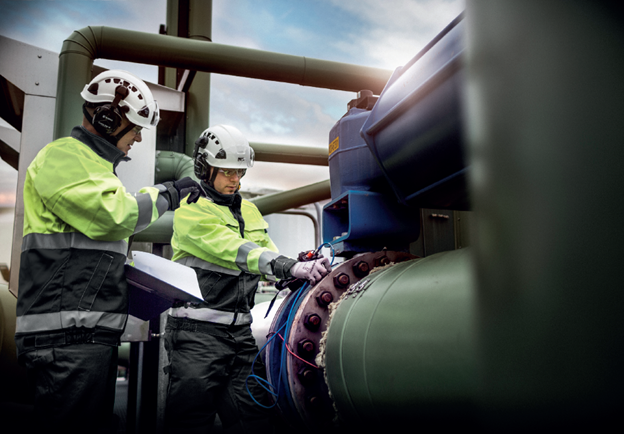Process control is what keeps a plant moving. It affects performance, product quality, energy efficiency, the environment, and even safety. Improvements in these areas can only be realized when process control is in immaculate order. Equipment, and by extension the plant, is only as good as how it is operated.
By Anton Miettinen, Installed Base Engineer – Valmet Flow Control Business Line
If you attune to the process control, you will notice that the plant dances and vibrates. Thousands of valves move every second in unison. Some make rapid small movements, while others make big wide swings. Valves are the performers of the plant and are essential components in process control.
A dancer who stumbles on stage ruins the performance of the troupe. In the same way, a malfunctioning valve ruins the plant’s performance.
It is easy to see that an underperforming valve can radiate control issues throughout the process. It may not respond to the control signals as intended or it may grind itself into an early grave with unnecessary movements. The causes and results vary but every plant operator wants to take good care of their valves. However, catching problems in time is not always easy.
Diagnostics to Detect Issues
A small computer sits on top of many valves. These computers have many names ranging from intelligent valve controllers to smart positioners. They translate the commands from the operators and automation system into the valve’s movements.
They can do more than just make valves move. Positioners can track dozens of variables, calculate trends, and form advanced diagnostics to evaluate its condition and performance. Using dedicated tools, the data and diagnostics from the positioner can be viewed and analyzed. This is how to identify emerging or underlying problems.
The valves are communicating, and operators need to listen. In the past, data collection and analysis were arduous manual processes. Most of the time, help from an analytics expert was necessary at every step. Without proper expertise, developing issues or potential findings could be missed.
Digitalization, Industry 4.0, IoT, and AI, along with the concepts, ideas, and technologies they encompass, have been presented as answers. However, without context, expert recommendations, and appropriate applications, these words remain mere buzzwords. The good thing is that all the pieces for building the solution are already present – they just need to be put together.

Cloud for Data and Computing
We already live in a business world where everything from email to ERP is in the cloud. What if we also placed flow control diagnostics there? We can collect information from all the devices at once and highlight the most actionable insights.

As a company, we are pioneers in positioner diagnostics and automation with several decades of experience. Our diagnostics-capable positioners are installed in thousands of plants of various sizes and industries. We can provide the whole diagnostics package, including connectivity, analytics, reporting, and expert advice.
In many cases, the positioners are already networked and capable of sending data through automation networks and condition monitoring solutions. When cables cannot carry the data, the connection can be wireless. With a small amount of work and a little networking hardware, pipelines can be opened, and the data can flow from positioners to the cloud.
With Valmet Industrial Internet and Valmet Customer Portal, a powerful cloud combines data storage and calculation capacity, and the data from positioners can be crunched efficiently and automatically. The cloud allows more advanced analytics such as performance and health metrics to be calculated as we are not limited to relying on the calculation power and memory of the positioners themselves. This allows us to catch more complex problems, find looming issues at an earlier stage, and monitor the health of the devices better.
The data and information are accessible through unified reporting in ValvesNow, our analytics tool for diagnostics. This tool allows multiple ways and angles to view the information to discover various insights about the valve fleet with the ability to manage them simultaneously.
As the information is coalesced, operators and managers have a definite view of the state of the devices. As a result, issues can be easier to find, isolate, and then properly tallied and assessed. With proper preventive action, complications can be remedied before their severity develops enough to affect production.
Through automatic analysis, insights are provided without delays. Removal of manual steps allows the information to be based on real-time data. The quality of the insights is elevated as the risk of human error drops, and experts can concentrate their time and effort on actionable insights instead of tedious data combing. You can be certain that you will always have the newest information available for your decision-making.

The correct insights at the right time are what bring value. You can invest money and resources optimally, and best of all, you can be certain that you are taking the right actions, as you have facts to properly determine the right decisions.


